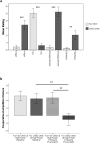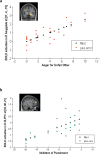Distinct Brain Areas involved in Anger versus Punishment during Social Interactions
- PMID: 30002411
- PMCID: PMC6043598
- DOI: 10.1038/s41598-018-28863-3
Distinct Brain Areas involved in Anger versus Punishment during Social Interactions
Abstract
Although anger and aggression can have wide-ranging consequences for social interactions, there is sparse knowledge as to which brain activations underlie the feelings of anger and the regulation of related punishment behaviors. To address these issues, we studied brain activity while participants played an economic interaction paradigm called Inequality Game (IG). The current study confirms that the IG elicits anger through the competitive behavior of an unfair (versus fair) other and promotes punishment behavior. Critically, when participants see the face of the unfair other, self-reported anger is parametrically related to activations in temporal areas and amygdala - regions typically associated with mentalizing and emotion processing, respectively. During anger provocation, activations in the dorsolateral prefrontal cortex, an area important for regulating emotions, predicted the inhibition of later punishment behavior. When participants subsequently engaged in behavioral decisions for the unfair versus fair other, increased activations were observed in regions involved in behavioral adjustment and social cognition, comprising posterior cingulate cortex, temporal cortex, and precuneus. These data point to a distinction of brain activations related to angry feelings and the control of subsequent behavioral choices. Furthermore, they show a contribution of prefrontal control mechanisms during anger provocation to the inhibition of later punishment.
Conflict of interest statement
The authors declare no competing interests.
Figures




References
-
- Dollard, J., Doob, L. W., Miller, N. E., Mowrer, O. H. & Sears, R. R. Frustration and Aggression. Yale University Press, (1939).
-
- Mikula G, Scherer KR, Athenstaedt U. The role of injustice in the elicitation of differential emotional reactions. Personality and social psychology bulletin. 1998;24:769–783. doi: 10.1177/0146167298247009. - DOI
Publication types
MeSH terms
Grants and funding
LinkOut - more resources
Full Text Sources
Other Literature Sources

